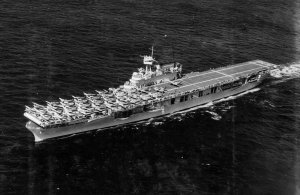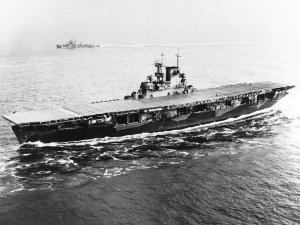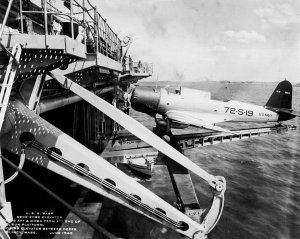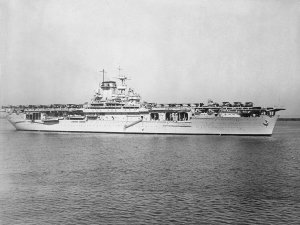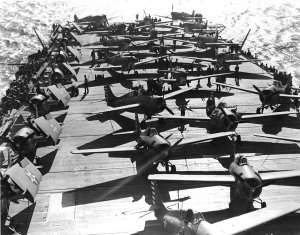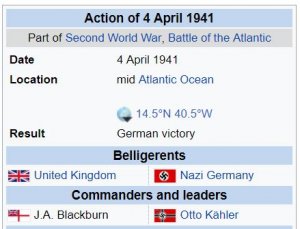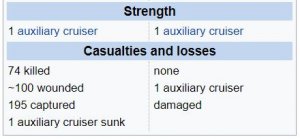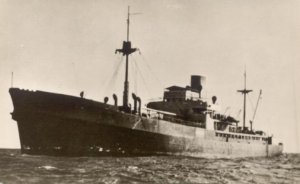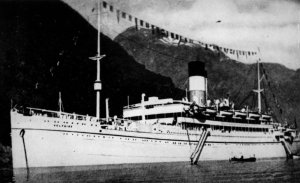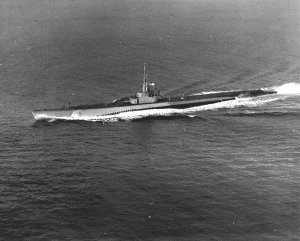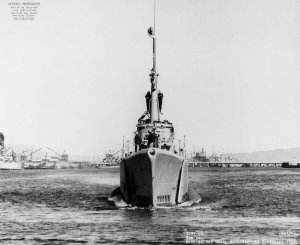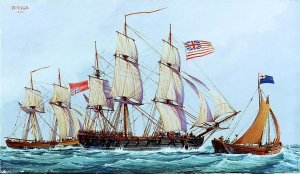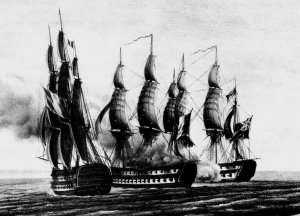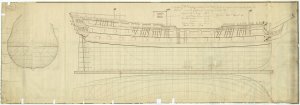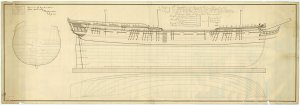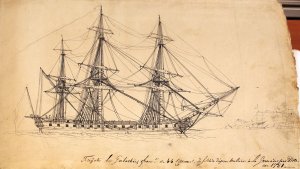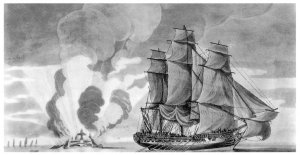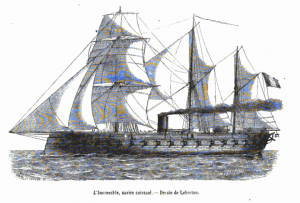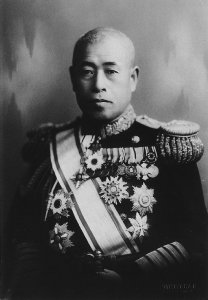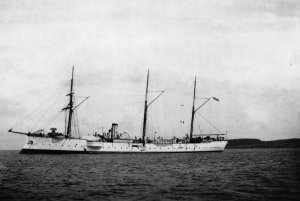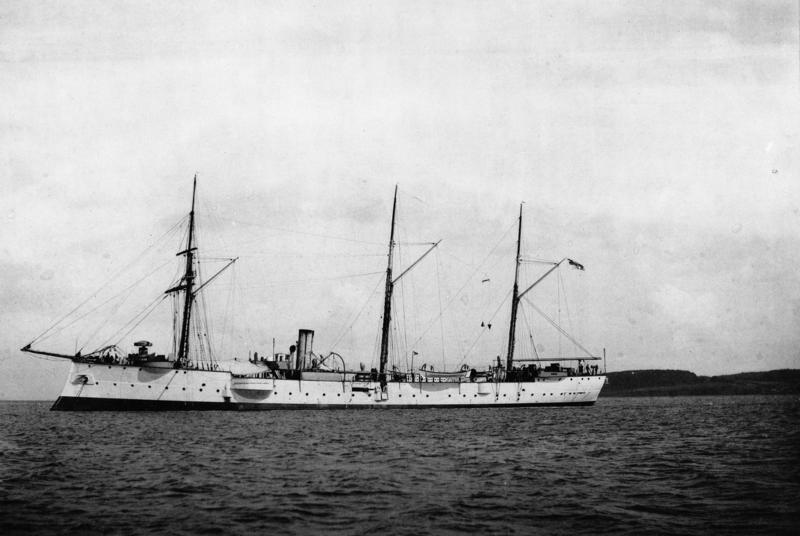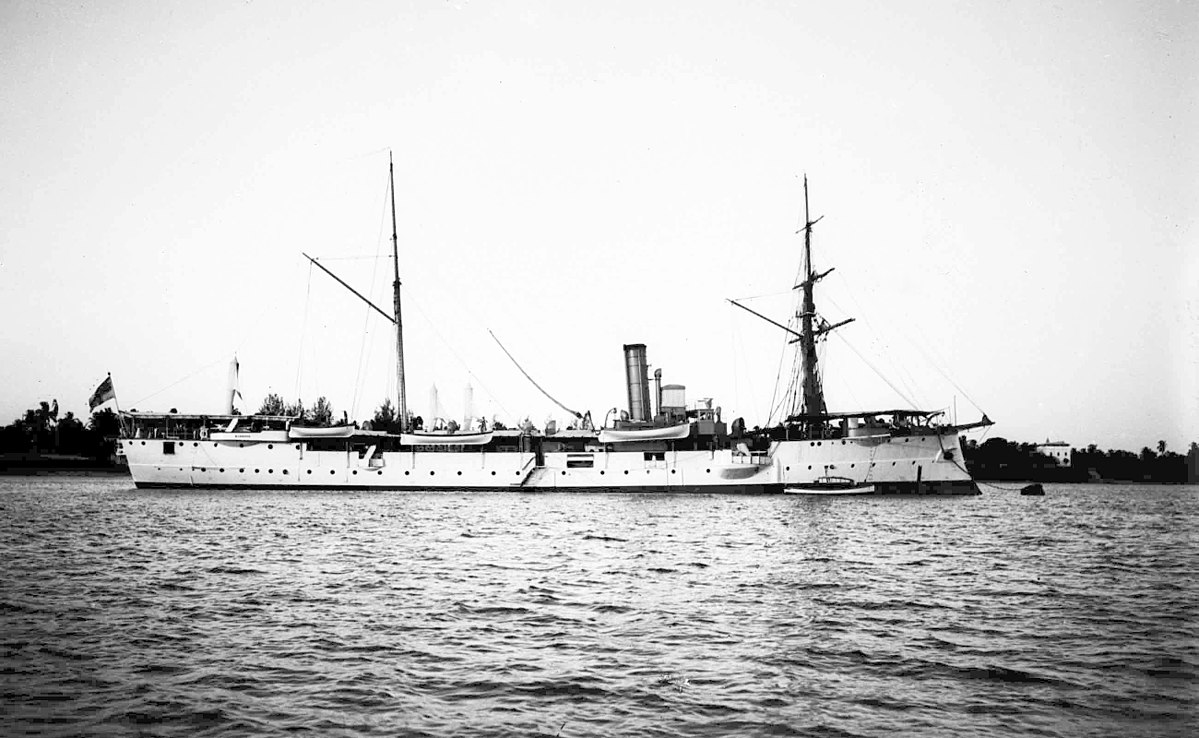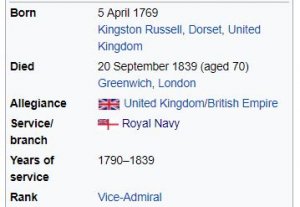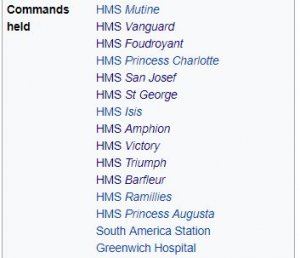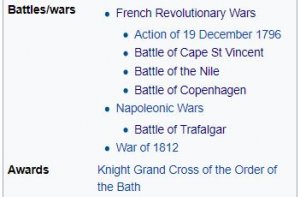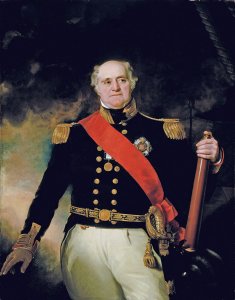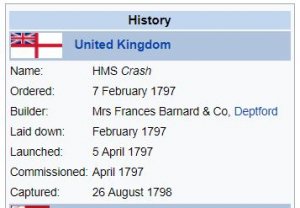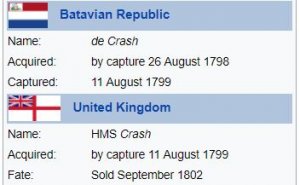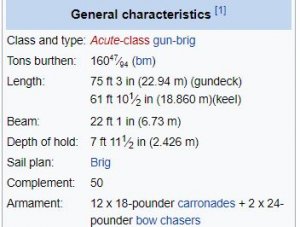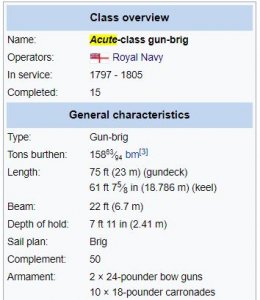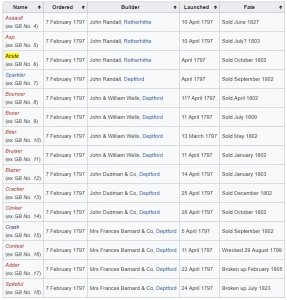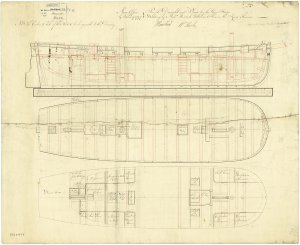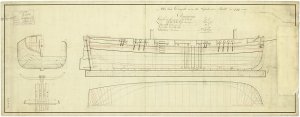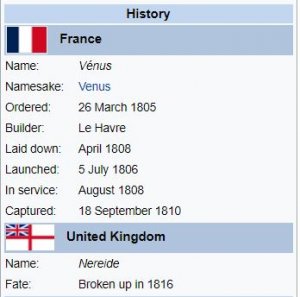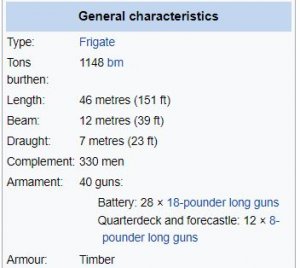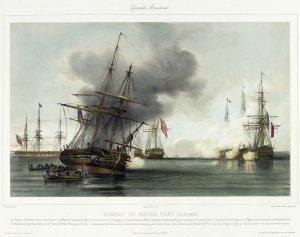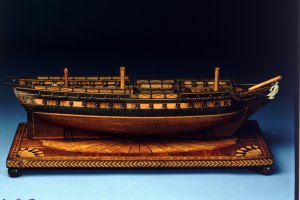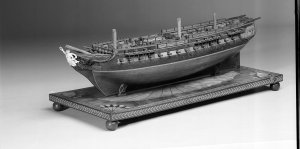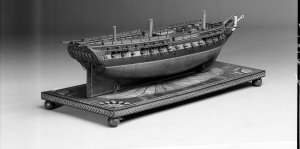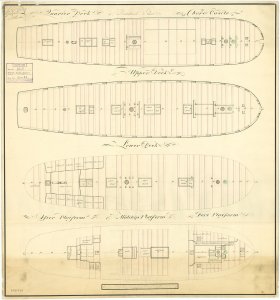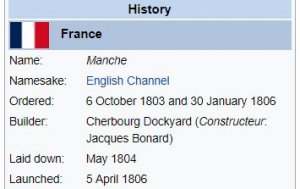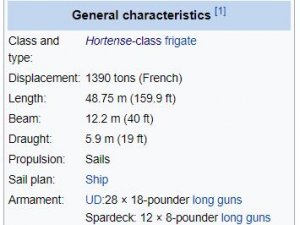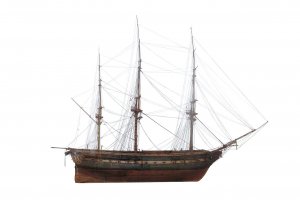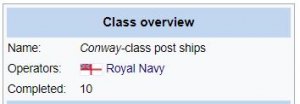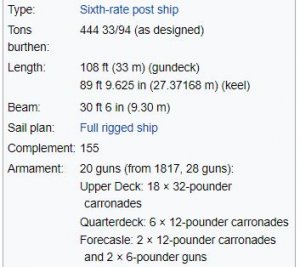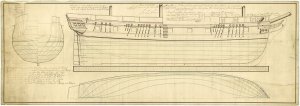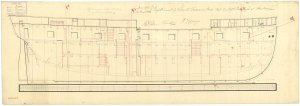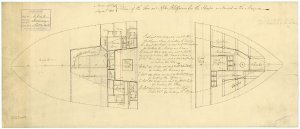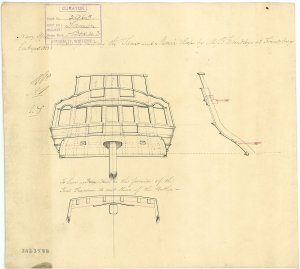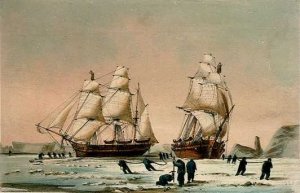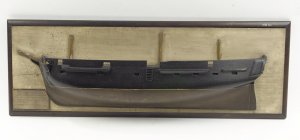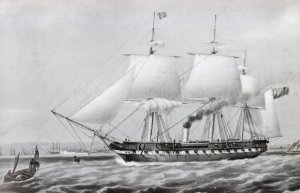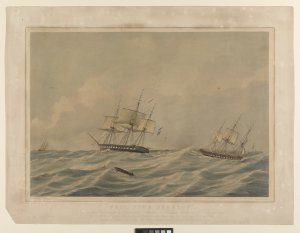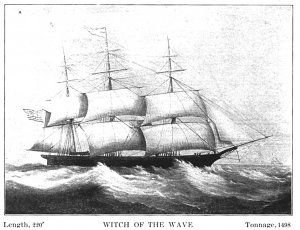Today in Naval History - Naval / Maritime Events in History
4 April 1878 – Launch of HMS Comus, a corvette (reclassified in 1888 as a third-class cruiser) of the Royal Navy.
She was the name ship of her class. Launched in April 1878, the vessel was built by Messrs. J. Elder & Co of Glasgow
HMS Comus was a
corvette (reclassified in 1888 as a third-class
cruiser) of the
Royal Navy. She was the
name ship of her
class. Launched in April 1878, the vessel was built by
Messrs. J. Elder & Co of
Glasgow at a cost of ₤123,000.
Comus and her classmates were built during a period of naval transition. Sail was giving way to steam, wooden hulls to metal, and
smooth-bore muzzleloading guns to
naval rifles.
Comus shows this transition; she was driven by both sails and a reciprocating steam engine; her hull was iron and steel but sheathed with wood and copper; and some of her muzzleloading guns were replaced by rifled breechloaders.
Comus was active for about two decades, but in that time went to the ends of empire, from the British Isles to the Caribbean and Nova Scotia to southwest Africa in the western hemisphere, and in the eastern, from the southern Indian Ocean to the northwest Pacific, and from the China station to the
Strait of Magellan.
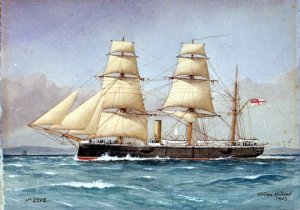 Design
Design
Main article:
Comus-class corvette § Design
Comus was a single-screw corvette (later classified as a third-class cruiser) designed for distant cruising service for the British Empire. Built with iron frames and steel plating, she was sheathed with wood and coppered. The hull was unprotected except for a 1.5 in (38 mm) of armour over the machinery spaces.
[3] with some additional protection offered by the coal bunkers flanking the engine spaces and
magazines.
Comus had a
ship rig, with sqaresails on all three masts.
[5] She and her class were among the last of the saiing corvettes. The vessel was also equipped with a steam engine driving a single screw with 2,590
indicated horsepower;
[6] to reduce resistance, this propeller could be hoisted into a slot cut in the keel when the vessel was under sail.
The ship initially carried two
7-inch muzzle-loading rifles, four
breechloading 6-inch 80-pounder guns and eight
64-pdr muzzle-loading rifles, but the breech loaders proved unsatisfactory and were replaced in the rest of the class with more 64-pounders.
Career
1879–1884 Indian and Pacific Oceans
Comus was fitted for sea at
Sheerness and commissioned on 23 October 1879 for service on the
China Station, under Captain James East and First Lieutenant (later Rear Admiral) George Neville. In November of that year she was still completing her trials. The ship then sailed for China, but was first assigned a "particular service", a search for
Knowlsey Hall, an iron sailing vessel which had not been heard from since her departure from Liverpool in May 1879.
Comus searched the
Crozet Islands, and other islands in the southern Indian Ocean. In 1880
Comus returned to the Crozets in order to deposit a cache of provisions at
Possession Island for the use of shipwrecked mariners. The 1881 census, which included British ships at sea, listed Chinese amongst her crew. In 1881–82 the ship was at the
Pellew Islands off the north coast of Australia.
Later in 1882
Comus crossed the Pacific Ocean to
San Francisco, and refit to prepare to take the
Marquis of Lorne, Governor General of Canada, and his spouse the
Princess Louise, daughter of
Queen Victoria, to
British Columbia. An anonymous note threatened the ship with destruction when the couple boarded, but a search yielded nothing, and the US revenue
cutter Richard Rush escorted the corvette out of the harbour.
Comus delivered the couple to
Esquimalt Harbour at
Victoria, British Columbia in September. The next month
Comus rendered assistance to two American vessels in distress off
Vancouver Island, actions for which Captain East was awarded a gold medal by the President of the United States.
Comus returned the governor-general and the princess to San Francisco in December.
In 1884
Comus sailed for home. Upon arrival in 1885, the corvette was rearmed and was partially rebuilt. The 7-inch guns and the 64-pounders at the corners were removed; the latter were replaced by 6-inch breechloaders on new
sponsons. A single
conning tower replaced the old pair.
1886–1891 North American and West Indies Station
After the refit
Comus recommissioned 6 April 1886 for service on the North American and West Indies Station. In 1889 the ship transported scientists to observe the
total eclipse of the sun off western Africa, and noted astronomer
Stephen Joseph Perry died aboard the vessel from dysentery contracted ashore.
1895–1898 Return to the Pacific
In 1891 she returned to Britain and was again refitted and rearmed. On 1 October 1895 she recommissioned for service in the Pacific, and at the end of the year was reporting on lighthouses being erected by Chile in the
Strait of Magellan. She saluted Alcatraz upon arrival in San Francisco 5 October 1896 while under the command of Captain H. H. Dyke. In 1897
Comus rescued shipwrecked sailors off
Acapulco in July, called at
Honolulu, Hawaii in September, and visited
Pitcairn Island in the south Pacific in November. The ship then returned home to be placed in reserve.
1898–1900 Return to North American and West Indies Station
Later in 1898 the ship was reassigned to the North American and West Indies station.
Comus engaged in fisheries protection, and was in
Halifax, Nova Scotia in 1899, and in the West Indies near
Trinidad in early 1900 under the command of Captain George Augustus Giffard. In late February 1900 she was ordered to return to Britain, where her officers and crew were turned over to the
HMS Charybdis, which took the place of the
Comus on the North America and West Indies Station.
1900–1904 Retirement and scrapping
Comus paid off that same year, and was stricken in 1902. The ship was sold 17 May 1904 for ₤3625, and was
broken up at Barrow by Messrs
Thos W Ward.
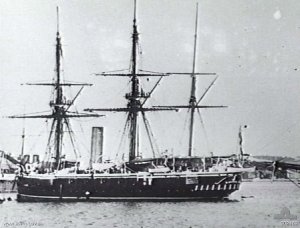
HMS
Curacoa at Sydney circa. 1890
The
Comus class was a class of
Royal Navy steam
corvettes, re-classified as
third-class cruisers in 1888. All were built between 1878 and 1881. The class exemplifies the transitional nature of the late
Victorian navy. In design, materials, armament, and propulsion the class members resemble their wooden sailing antecedents, but blended with characteristics of the all-metal mastless steam cruisers which followed.
Despite their qualities they had relatively short commissions, as they soon were rendered superfluous by the "flood of warships" built under the
Naval Defence Act of 1889. By the turn of the century all were in reserve, relegated to subsidiary duties, or being scrapped
Purpose
Great Britain had a worldwide empire, founded upon and sustained by seaborne commerce. To protect this trade and police its empire, Britain constructed many small and medium-sized cruisers, the latter typically armed with guns up to six inches in calibre. They were designed to serve long periods at sea, and therefore were equipped with sails. The nine
Comus-class corvettes and their later derivatives — the two
Calypso-class corvettes — were ships of this type.
Design
Planning for six metal-hulled corvettes began in 1876. These vessels, which became the
Comus-class corvettes, were designed by
Nathaniel Barnaby. Among the Royal Navy’s last sailing corvettes, they supplemented an extensive sail rig with powerful engines. Unlike their French rivals, which built fast steamers and needed neither long range nor a full rig of sail, the Royal Navy required their cruisers to be capable of long voyages away from coaling stations. Their ships therefore had a beamy hull to handle their sails, making them slower under steam than their French counterparts.
The British vessels were similar in appearance and layout to the older wooden and composite-hulled small cruisers they were intended to replace, albeit larger and more powerfully armed. The vessels were among the first of the smaller cruisers to be given metal hulls, with frames of iron or steel. The forefoot was a
ram forged from brass, a feature then in vogue. In common with older wooden vessels, their hulls had
copper sheathing over timber beneath the waterline, but that timber simply served to separate the iron hull from the copper sheathing so as to prevent
electrolytic corrosion. The timber extended to the upper deck; it was in two layers from the keel to 3 ft (.9 m) above the water line, and one layer above.
In an early case of a single builder taking responsibility for building an entire class, contracts for these first six vessels were all awarded to the John Elder & Company at
Govan on the
Clyde. They were all fitted with 3-cylinder compound engines, with one high-pressure cylinder of 46 inches diameter being flanked by two low-pressure cylinders of 64 inches diameter.
Two to three years later, the Admiralty ordered an additional three vessels to be built to the same design. Construction of these was awarded to the Royal Dockyards at
Chatham and
Portsmouth. This second group differed by carrying a barque rig instead of the ship rig of the first six ships. The compound engines in the new batch were of 4-cylinder type, with two high-pressure cylinders of 36 inches diameter and two low-pressure cylinders of 64 inches diameter.
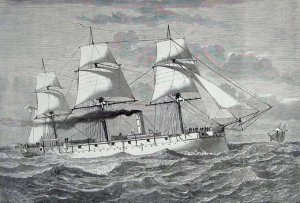 Comus
Comus when built, showing
ship rig
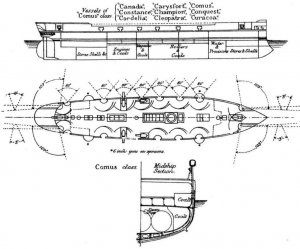
Diagrams of the
Comus class
In the
Comus class, the bow above the waterline was nearly straight, in contrast to that of wooden sailing ships. The corvettes had stern galleries, similar to older frigates, but the ports were false, and there were no
quarter galleries. Boats were carried both amidships and at the stern. The ships flew a
barque or
ship rig of sail on three masts, including
studding sails on fore and mainmasts. The masts were stayed by
shrouds which were anchored to
chainplates affixed to the inside of the
gunwales, rather than the exterior as in wooden sailing ships. Their sailing rigs enabled them to serve in areas where coaling stations were rare, and to rely on their sails for propulsion.
The vessels had two complete decks, upper and lower, with partial decks at the forecastle and poop. The forecastle was used for the
heads and working space for the cables. The
poop deck contained cabins for the captain, first lieutenant, and navigating officer, with the double wheel sheltered under its forward end. Between these was the open quarterdeck on which the battery was located. Under the lower deck were spaces for water, provisions, coal, and magazines for shell and powder. Amidships were the engine and boiler rooms. These were covered by an armoured deck, 1.5 inches (38 mm) thick and approximately 100 ft (30 m) long. This armour was about 3 ft (90 cm) below the lower deck, and the space between could be used for additional coal bunkerage. The machinery spaces were flanked by coal bunkers, affording the machinery and magazines some protection from the sides. The lower deck was used for berthing of the ship's company; officers aft, warrant and petty officers forward, and ratings amidships, as was traditional. The tops of the coal bunkers, which projected above deck level, were used for seating at the mess tables. The living spaces were well-ventilated and an improvement over prior vessels.
There were some refinements in the design among class members, and the armament in particular changed during their careers. In 1881 an enlarged version of the design was drawn up by Barnaby, with the hull being lengthened by another 10 ft. Two ships were ordered to this later design, which became the
Calypso class. The
Comuses and
Calypsos were sometimes called the "C class" of corvettes, an informal term rather than an official designation.
Armament
Comus was armed with two
7-inch muzzle-loading rifles, eight
64-pounder muzzle-loading rifles and four
breech-loading 6-inch 80-pounder guns, but the breech loaders proved unsatisfactory. The rest of the class were provided with four more 64-pounders in place of the 6-inch breech loaders, except for
Canada and
Cordelia, which exchanged all the muzzle loaders for ten of the new
6-inch Mk II breech loading guns. A selection of light guns and
Nordenfelt quick-firing guns, as well as a pair of torpedo carriages, were also carried. The large guns were in embrasures in the bulwarks of the upper deck; this was a common (and to some extent a differentiating) feature of steam corvettes, as most frigates carried their main armament one deck lower. The details of the main armament varied between the vessels, and during their careers, as all were rearmed after their first commissions.
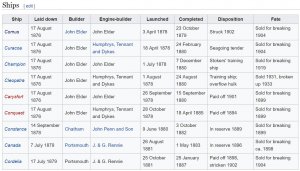
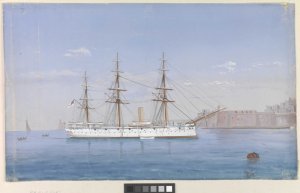 https://en.wikipedia.org/wiki/HMS_Comus_(1878)
https://en.wikipedia.org/wiki/HMS_Comus_(1878)

en.wikipedia.org
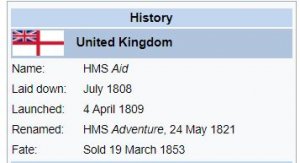
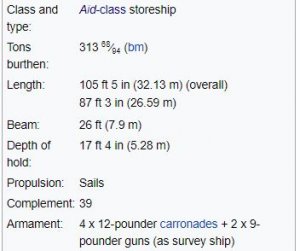
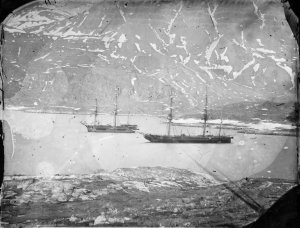
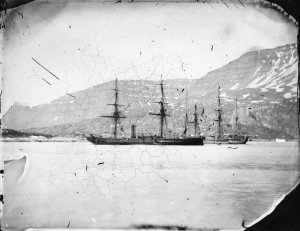

 en.wikipedia.org
https://collections.rmg.co.uk/collections.html#!csearch;searchTerm=diligence_1814
en.wikipedia.org
https://collections.rmg.co.uk/collections.html#!csearch;searchTerm=diligence_1814






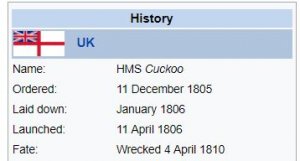
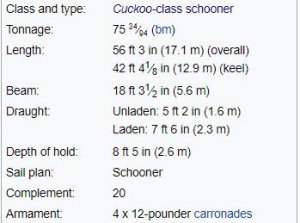
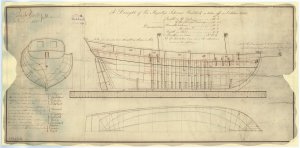
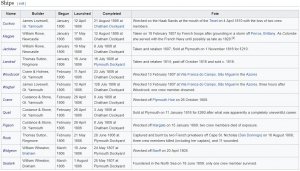
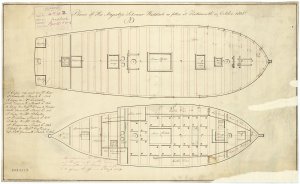
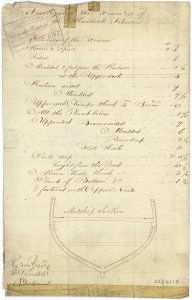
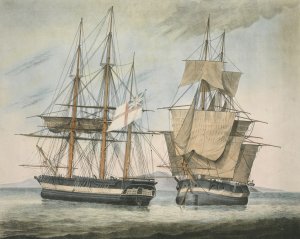
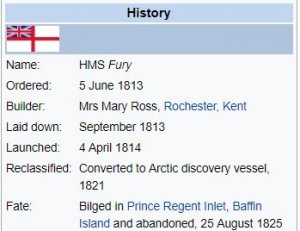
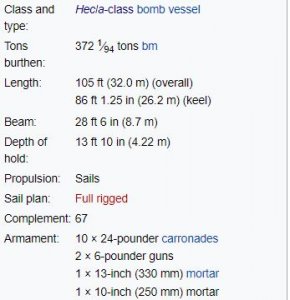
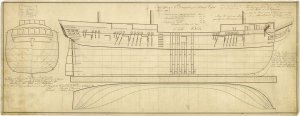
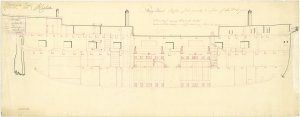

 s of HMS Fury(1814).
s of HMS Fury(1814).

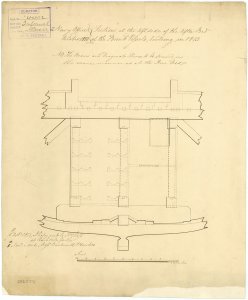
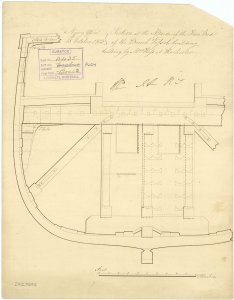
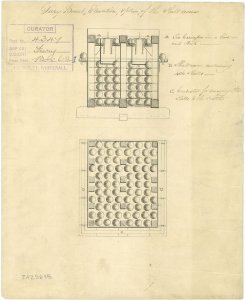
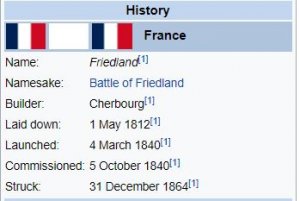
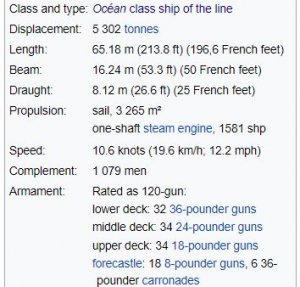
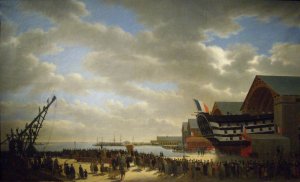
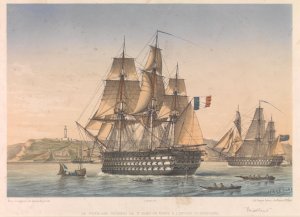
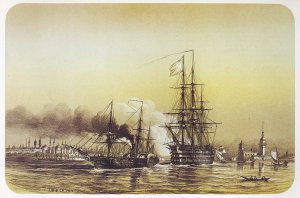
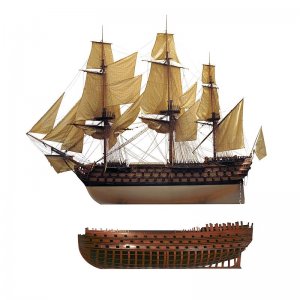
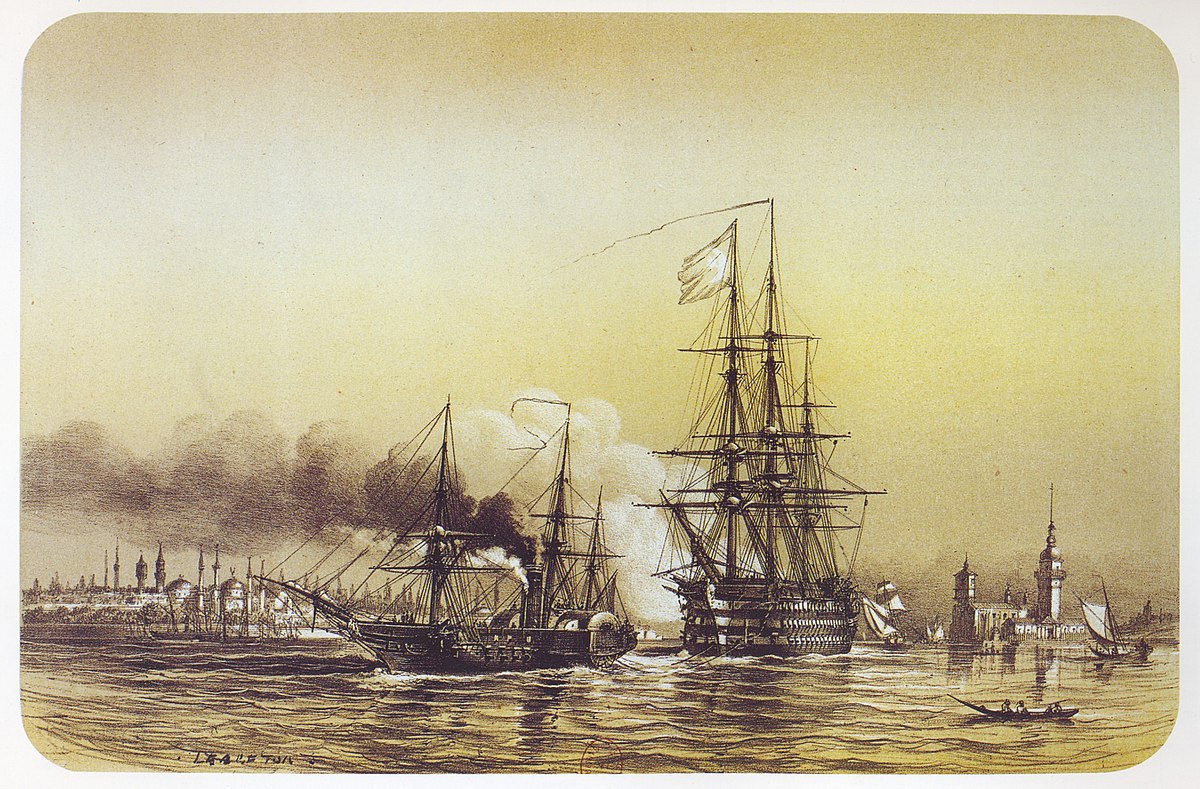
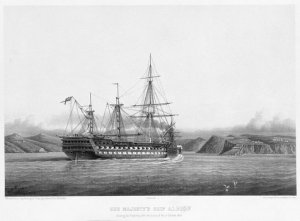

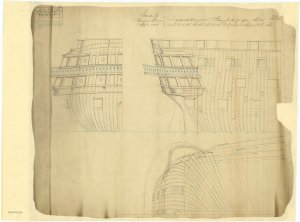

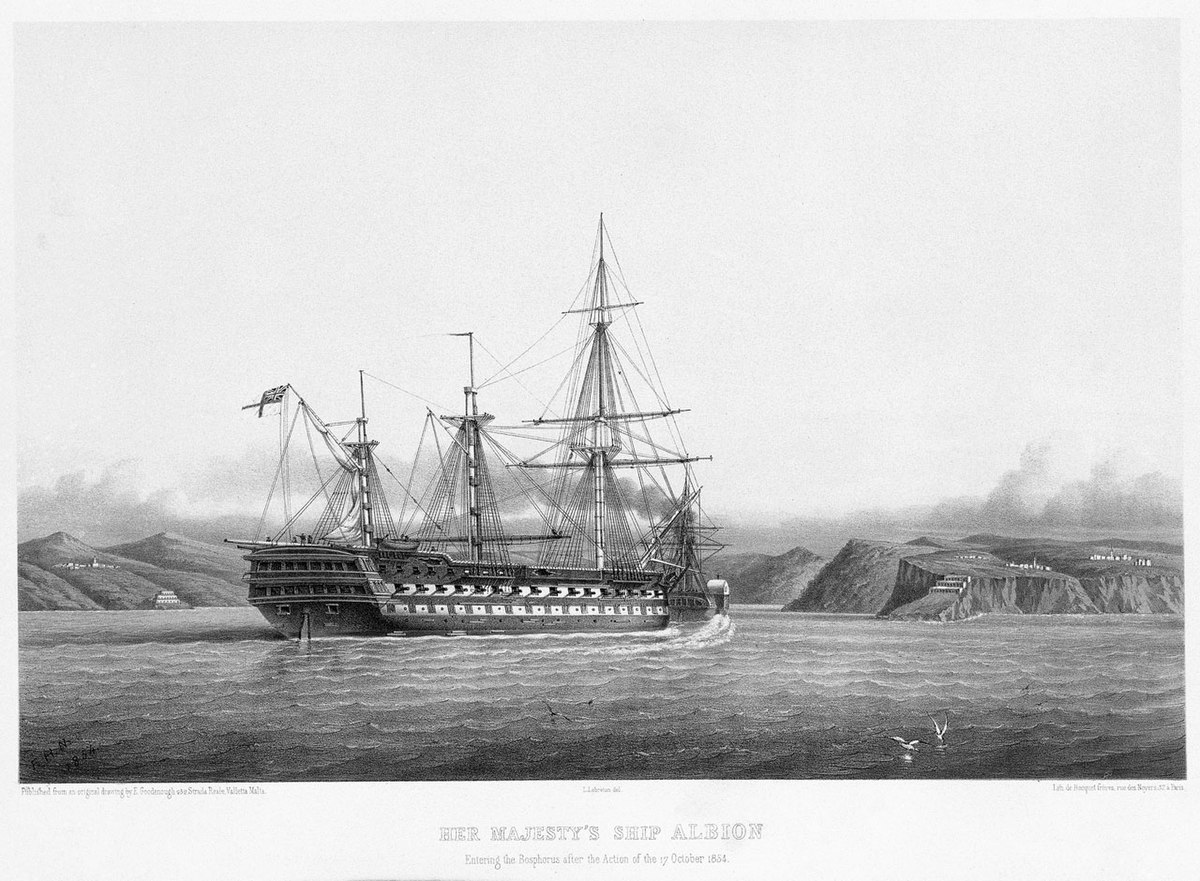






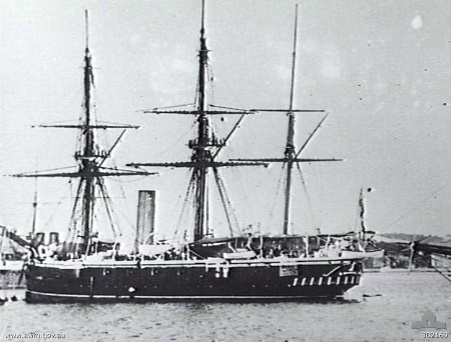
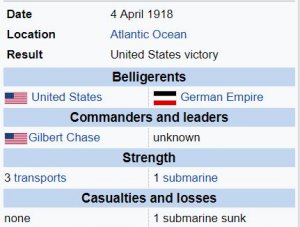
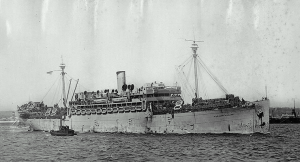
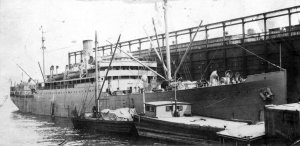
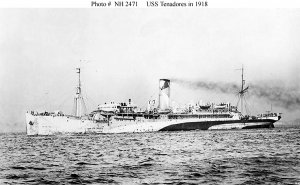
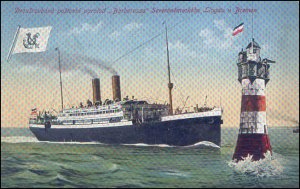
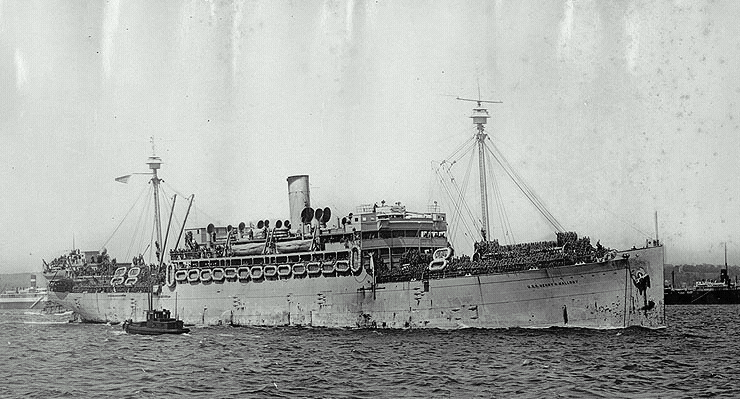
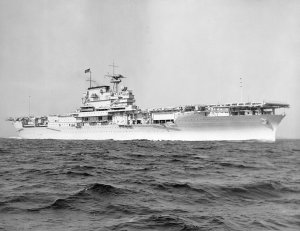
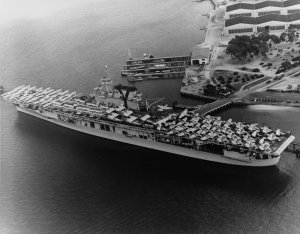
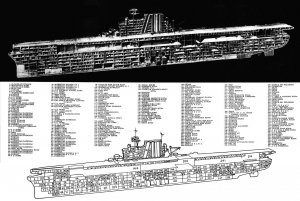
 Shipbuilding Company
Shipbuilding Company
